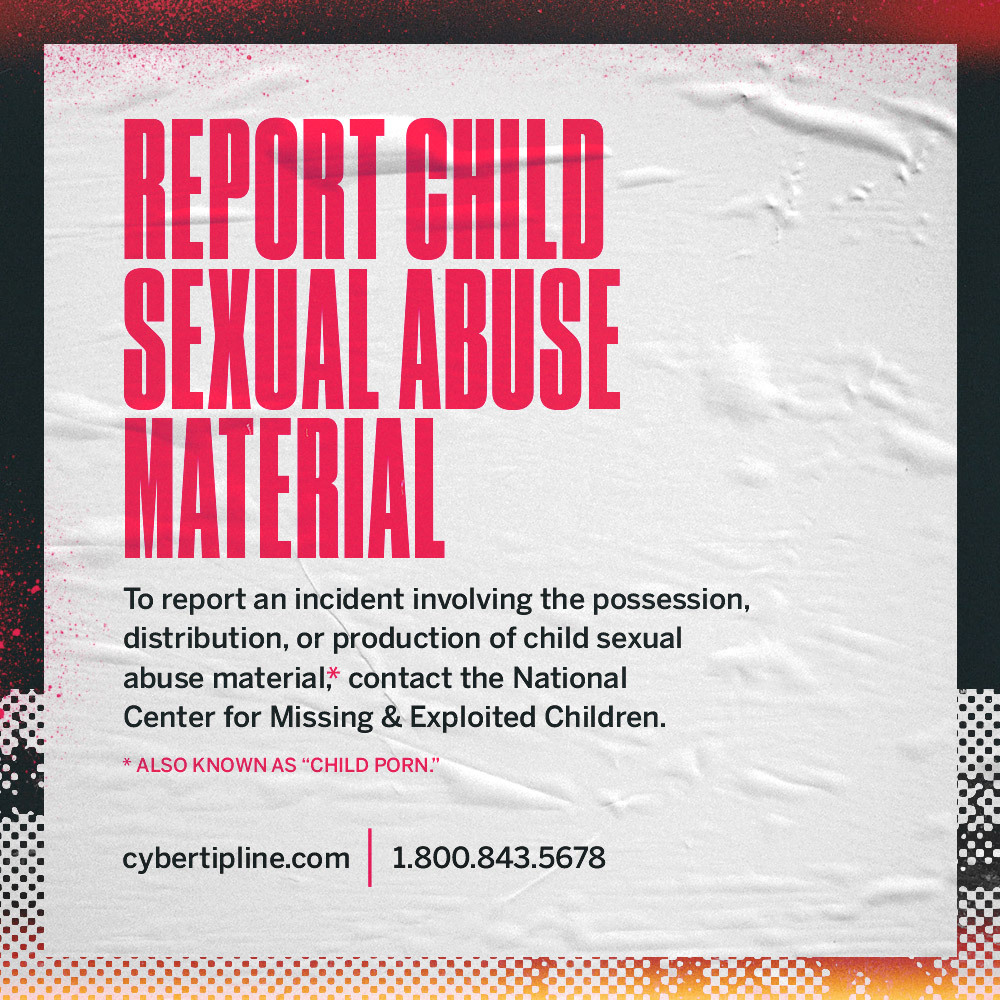A new study on the role of parents and parental figures in child sexual abuse material (CSAM) was recently conducted by the Australian Institute of Criminology. Its results are both educational and concerning.
Drawing from 82 cases of CSAM production and distribution perpetrated by parents and/or parental figures in Australia from 2009 to 2019, their research published in February of 2021 found several interesting things:
- CSAM is a gendered crime: 84% of victims were girls, and 90% of offenders were men; by contrast, 20% of cases involved victimization of boys.
- Parents play a larger role in the abuse than expected: The victim’s biological father (58%) or stepfather (41%) were most likely to be the offender.
- Victims are young: Over 60% of victims were under the age of nine.
- CSAM is severely underreported: In only 20% of cases did victims tell anyone about their abuse (according to 58 cases in which information was able to be concluded).
These findings led researchers to conclude several things.
First, that there are three typical profiles that parental offenders usually follow: “the biological paternal offender who forms adult relationships and has children of his own to exploit, the step- or de facto parental offender who forms a relationship with a woman and exploits her children or seeks to obtain children by some other means (such as surrogacy), and the biological mother who produces sexual abuse material of her children at the behest of her partner or men with whom she is acquainted.”
Second, the study found that parental offenders are often highly premeditated in their abuse and exploitation of their children. Third, “sexual abuse prevention and online safety education programs can’t assume parents are protective. These programs should sensitively address the problem of abuse, exploitation and image-making by family members.” Fourth, there is a need for support and advice that removes stigma for those worried that their partner may be consuming CSAM.
Why is this relevant?
CSAM, or “child pornography” as its commonly known, is the visual depiction of sexually explicit conduct involving a minor (any person under 18). These “visual depictions” include photographs, videos, digital or computer-generated images that are indistinguishable from an actual minor.
CSAM is a form of child sexual exploitation, an umbrella term that encompasses crimes such as child sex tourism, child sex trafficking, online enticement of children for sexual acts, etc.
Related: How Child Predators Use Video Chat Site Omegle To Find And Abuse Children
The study is important because it focused on an aspect of CSAM that may be surprising, but is an unfortunate reality: for many children, their abuse begins at home.
For example, in one report by the Canadian Centre for Child Protection, 42% of CSAM cases involved the victim’s biological or adoptive/stepfather as the primary offender, and in almost 70% of cases, the abuse appeared to have occurred at their home.
How prominent is CSAM?
The exact number is unknown, as this crime is notoriously underreported, both by victims and by those who come across CSAM without necessarily seeking it out. In addition, it’s challenging to detect due to advanced consumption and sharing methods such as live-streaming that leave little to no digital evidence. However, a few numbers can give us a sense of the magnitude of the issue:
The National Center for Missing and Exploited Children (NCMEC), one of the leading organizations in the U.S. fighting child victimization, reviews over 25 million images annually. They report that 19,100 victims have been identified by the Child Victim Identification Program, an initiative launched in 2002 that seeks to identify child victims already detected within law enforcement systems.
In 2019, the New York Times reported that almost 70 million reports were made to the U.S. government. During the pandemic, authorities such as Interpol found that the number of cases had also risen significantly, and has conducted a report outlining the main issues.
So what can we do?
While there are now new mediums in which CSAM can be consumed and shared, making it more difficult to detect and report, there are also increasingly creative ways to put an end to this exploitation of children. From technologies that help cut time law enforcement spends on identifying victims to super-sniffing “porn dogs”, innovative methods for tracking abusers and victims are being developed.
Yet, we can play a role too. How?
Cliché as it may sound, the best way to do something is to say something if you see something. Report CSAM if you come across it, and encourage others to do the same if they access it. Though it’s in more extreme cases, even by receiving CSAM and failing to report it, law enforcement can press charges for possession of CSAM.
Report, report, report
The two sources from which CSAM usually comes from is online or via old-school mail (the latter less common today). The way to report it depends on which of the two sources the abusive content is from. If from the mail, contact the U.S. Postal Inspection Service. If online (most likely the case), you can report CSAM at your customs office, internet service provider, or to the FBI.
However, the easiest option is to report on NCMEC’s cybertip site or to call their hotline (1-800-843-5678), and they will forward your report to the proper law enforcement agency. Some other organizations such as the Internet Watch Foundation also have easy-to-follow report mechanisms. If all else fails, a simple Google search will lead to an organization or law enforcement agency that will help to file a report.
The production of child sexual abuse material is an abuse no child should ever have to endure, and re-endure when this content is shared and their trauma relived. CSAM may go unreported, but we can play a part in changing that, and putting an end to this exploitation. You with us?
To report an incident involving the possession, distribution, receipt, or production of child sexual abuse material, file a report on the National Center for Missing & Exploited Children (NCMEC)’s website at www.cybertipline.com, or call 1-800-843-5678.

Your Support Matters Now More Than Ever
Most kids today are exposed to porn by the age of 12. By the time they’re teenagers, 75% of boys and 70% of girls have already viewed itRobb, M.B., & Mann, S. (2023). Teens and pornography. San Francisco, CA: Common Sense.Copy —often before they’ve had a single healthy conversation about it.
Even more concerning: over half of boys and nearly 40% of girls believe porn is a realistic depiction of sexMartellozzo, E., Monaghan, A., Adler, J. R., Davidson, J., Leyva, R., & Horvath, M. A. H. (2016). “I wasn’t sure it was normal to watch it”: A quantitative and qualitative examination of the impact of online pornography on the values, attitudes, beliefs and behaviours of children and young people. Middlesex University, NSPCC, & Office of the Children’s Commissioner.Copy . And among teens who have seen porn, more than 79% of teens use it to learn how to have sexRobb, M.B., & Mann, S. (2023). Teens and pornography. San Francisco, CA: Common Sense.Copy . That means millions of young people are getting sex ed from violent, degrading content, which becomes their baseline understanding of intimacy. Out of the most popular porn, 33%-88% of videos contain physical aggression and nonconsensual violence-related themesFritz, N., Malic, V., Paul, B., & Zhou, Y. (2020). A descriptive analysis of the types, targets, and relative frequency of aggression in mainstream pornography. Archives of Sexual Behavior, 49(8), 3041-3053. doi:10.1007/s10508-020-01773-0Copy Bridges et al., 2010, “Aggression and Sexual Behavior in Best-Selling Pornography Videos: A Content Analysis,” Violence Against Women.Copy .
From increasing rates of loneliness, depression, and self-doubt, to distorted views of sex, reduced relationship satisfaction, and riskier sexual behavior among teens, porn is impacting individuals, relationships, and society worldwideFight the New Drug. (2024, May). Get the Facts (Series of web articles). Fight the New Drug.Copy .
This is why Fight the New Drug exists—but we can’t do it without you.
Your donation directly fuels the creation of new educational resources, including our awareness-raising videos, podcasts, research-driven articles, engaging school presentations, and digital tools that reach youth where they are: online and in school. It equips individuals, parents, educators, and youth with trustworthy resources to start the conversation.
Will you join us? We’re grateful for whatever you can give—but a recurring donation makes the biggest difference. Every dollar directly supports our vital work, and every individual we reach decreases sexual exploitation. Let’s fight for real love:




